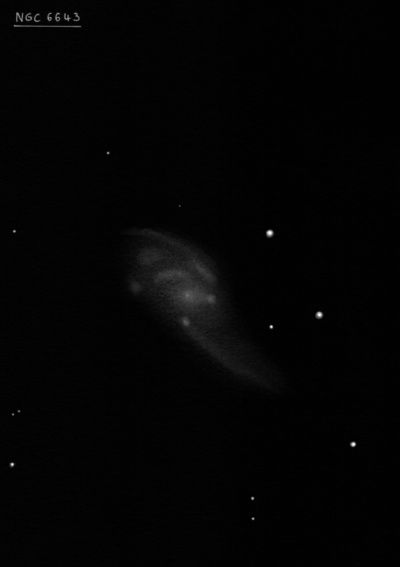
Eduard Schönfeld discovered NGC 6643 = Au 40 = HN 21 in 1858 while measuring stars for the Bonner Durchmusterung (BD +74 766). This relatively bright galaxy was missed by both Herschels. Horace Tuttle rediscovered the galaxy on 1 Sep 1859 using a 4-inch comet-seeker at Harvard College Observatory and called it "an elongated faint nebula" (reported in AN 1337). Using the 6-inch Heliometer at Königsberg, Auwers described the nebula as "fairly bright, gradually brighter in the middle, elongated in PA 50°, 2.5 'l, 1.5' br. Two small star are immediately preceding; the major axis of the nebula is inclined only slightly with respect to their connecting line."
Around the time of discovery there was discussion this was possibly a "variable nebula" (a popular topic in the mid to late 19th century), based on very disparate descriptions by Tuttle and d'Arrest (4 observations in "Siderum Nebulosorum"). Wolfgang Steinicke provides the observational history in his book on the NGC discoveries.
200/250mm - 8" (6/19/82): faint, diffuse, moderately large, elongated SW-NE. Two mag 12 stars are at the west edge.
400/500mm - 17.5" (7/9/88): fairly bright, large, oval 2:1 SW-NE, broadly concentrated halo. Forms the east vertex of a triangle with two mag 11.5 stars 1.6' NW and 2.0' W. Also a mag 15 star is off the west edge 1.4' from center.
Notes by Steve Gottlieb